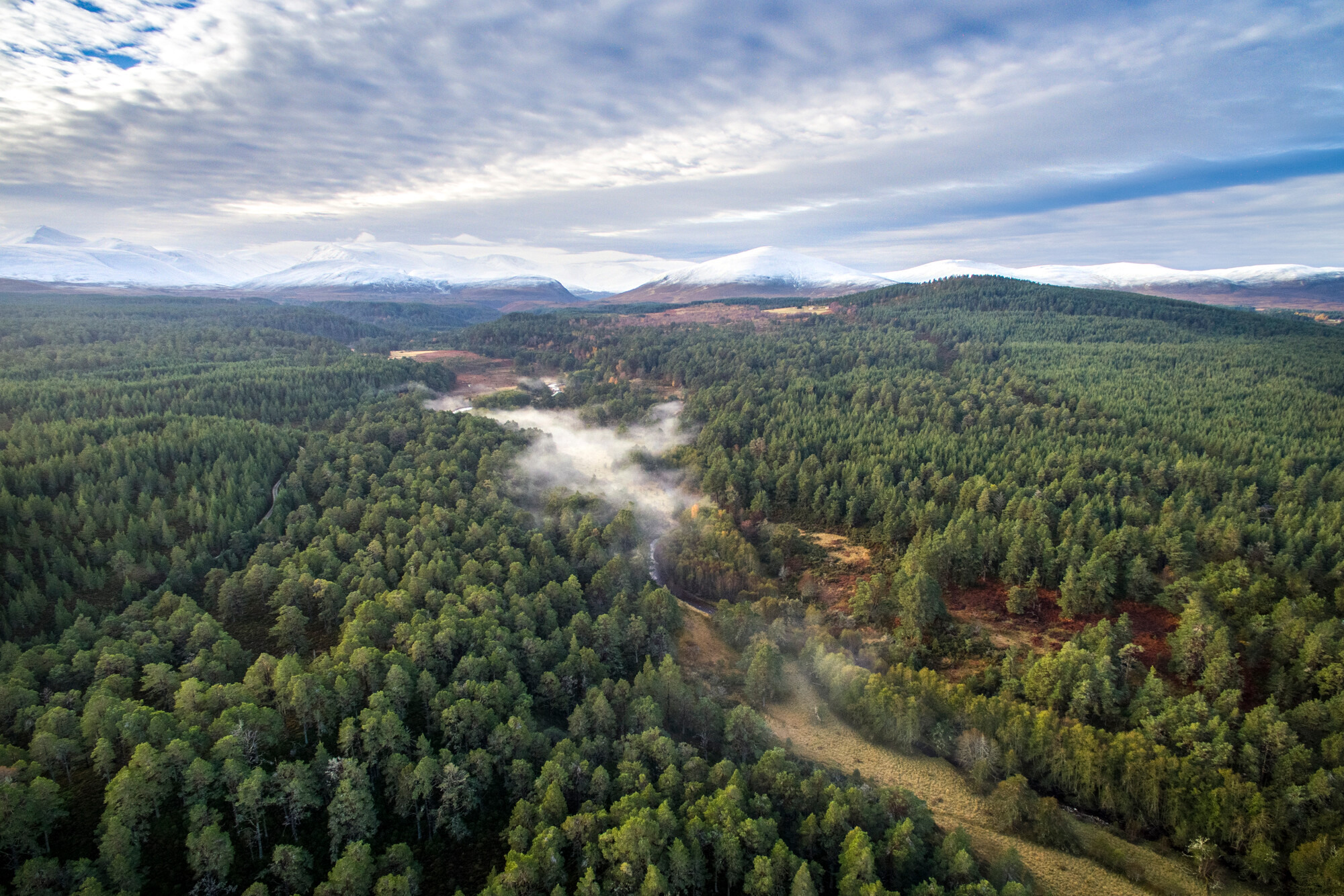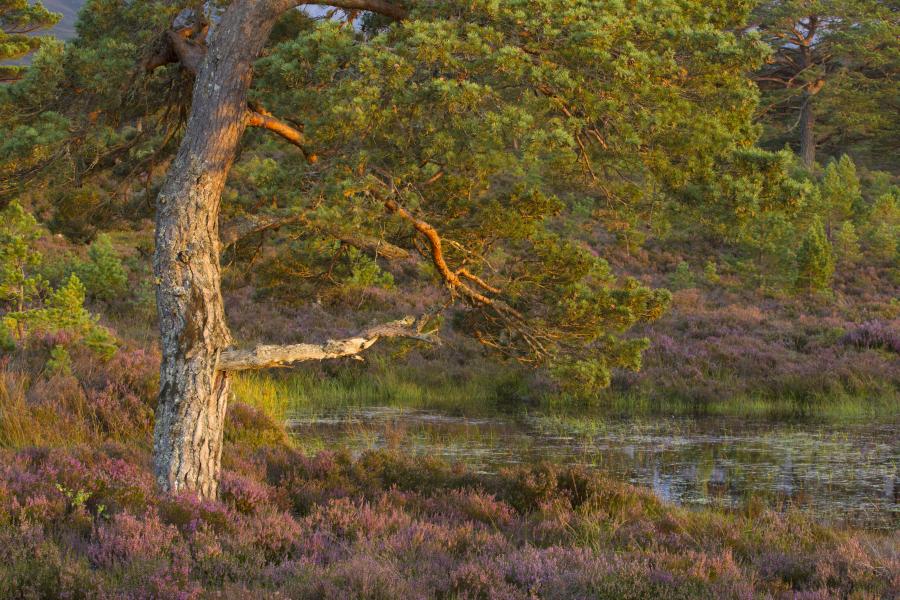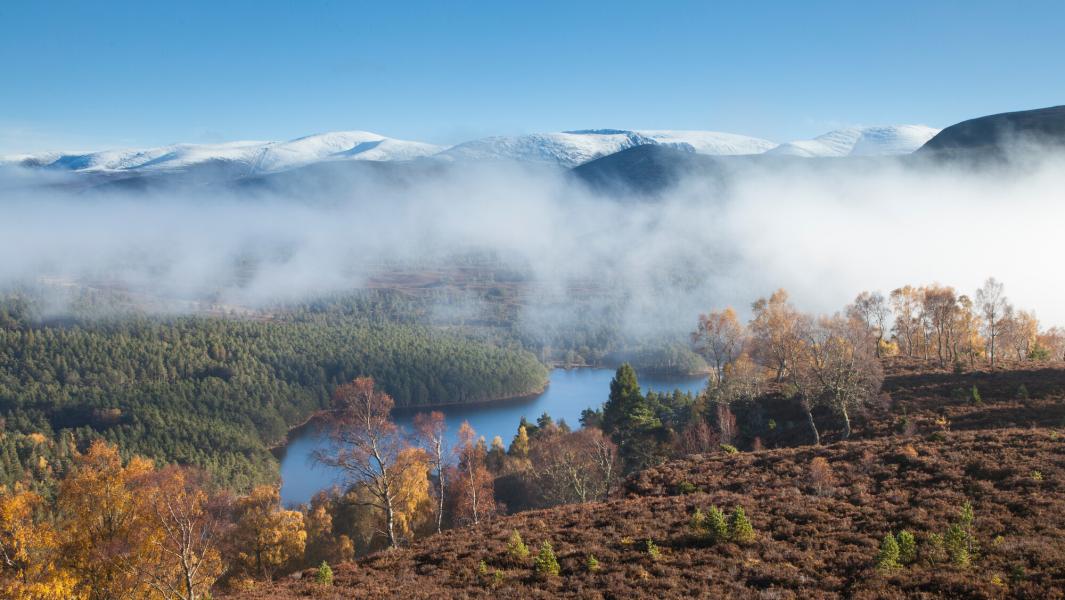Woodland

The Cairngorms is home to a variety of spectacular landscapes, and the vast, enticing and ancient woodlands of the National Park are renowned across the world.
Famously, the Cairngorms is known for being one of the few remaining strongholds for the Caledonian forest, taking its name from the Romans who called Scotland ‘Caledonia’. Where once, much more of the highlands of Scotland were covered by this unique ecosystem, a wilderness of Scots pine over juniper, in amongst a mixture of oak, rowan atop a bed of heather, blaeberry and cowberry, this is no longer the case. Changes in climate, with wetter and windier weather, and human intervention beginning around 4,000 years ago in the Neolithic period saw the once thriving forest reduced to pockets, although recent conservation efforts have made significant headway in reversing this decline.
Many of the iconic Scots pine trees seen in forests throughout the Cairngorms are directly descended from the first pines that arrived in Scotland following the late glacial period around 7,000 BCE (before the Common Era). Highly adapted to the Scottish highlands, these last remaining forests are globally unique in their ecological characteristics and form an unbroken 9,000 year chain of natural evolution.
Featured
Wildlife
The Cairngorms National Park is home to a quarter of the UK’s rare and endangered species. Its rich habitats are a haven for an array of wildlife, from iconic birds to elusive plants and flowers.
Wildfire management
As the climate changes, the risk of wildfires is ever more present in our daily lives and in a National Park, a wildfire has the potential to be devastating.
What we do
From pioneering conservation projects to community engagement and active travel, find out more about the range of work happening across the National Park.
But it is not just Caledonian forests that make the Cairngorms a woodland wonderland. Elsewhere throughout the seasons across the National Park ancient oaks weather the storms, burnt orange aspen leaves shiver in the wind, rowan berries burst amongst flocks of migrating waxwings and mountain willow scrub stands firm, resiliently withstanding some of the harshest weather conditions in the UK.
Beneath the branches the forest floors are a blanket of heather and wild berries, alongside delicate and rare flowers such as the lesser twayblade, creeping ladies tresses, one-flowered wintergreen and the twinflower.
Each of these unique woodland habitats are home to some of Scotland and the UK’s rarest and most endangered species. Where once brown bears, grey wolves and elk would have roamed, the Scottish wildcat, red squirrel, pine marten and capercaillie now reside. A birdwatchers paradise, the calls of crested tits and the endemic Scottish crossbill, native only to Scotland, can be heard in many regions of the National Park.
Offering sanctuary to wildlife and people alike, the woodlands of the Cairngorms are a vitally important and special place. It’s little wonder that forests feature so evocatively in Scots and Gaelic folklore, showing a powerful connection between people, place and heritage.







